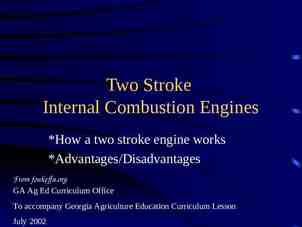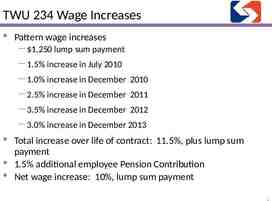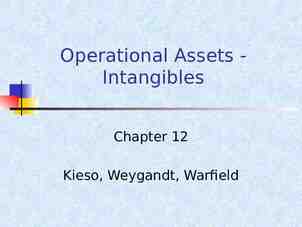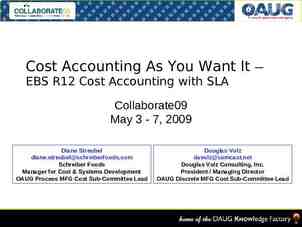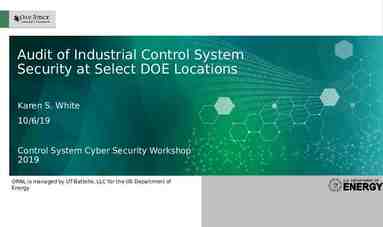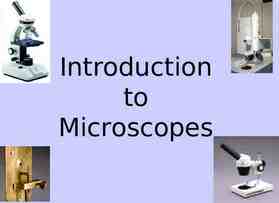Writing an Import Compliance Manual Karin Bogue Esq. ICPA
13 Slides818.50 KB

Writing an Import Compliance Manual Karin Bogue Esq. ICPA Conference March 18, 2010

Pros Helps Demonstrate Compliance Provides a Training Tool and Decreases the Learning Curve Improves Efficiency Centralizes Information and Provides Consistency (Electronic Versions ) Cons Initial Expense Maintenance - Updates

Policy v. Procedure Policies Generally, policies contain the rules and regulations set by an organization. Policies explain the rules by stating "what" and "why." Procedure Procedures contain a set of established methods, or steps, for accomplishing a task or conducting business. Procedures explain "how" to enforce the policies. Both terms will be used in this presentation since some companies prefer to draft broad policies while others create more detailed procedures. Some companies may create both.

Getting Started Manuals come in a variety of styles and there are many ways to write them. While there is no one right way to create a manual, there are several steps to consider when undertaking a procedure-writing project. Resources CBP provides a sample Internal Control Manual in Exhibit 4a of the Focused Assessment Program Documents. Customs brokers, attorneys, and consultants may also offer services for assisting importers with creating their procedures. Boskage Commerce Publications, Ltd. publishes a generic Import Policy and Procedure Manual as well as a generic C-TPAT Procedures Manual. The ICPA and your compliance colleagues may be a source of information for certain procedures.

Process Obtain support of executive management. Identify CBP related laws and regulations, activities and products that may require procedures. Draft an outline or table of contents of procedure topics. Compile and review any existing procedures, making notes for necessary changes. Collect information that will help you draft the policy or procedure. Identify other departments that will have responsibility for carrying out some procedures and enlist their assistance.

Process Select a format. Create drafts of procedures. Consult outside experts as needed. Review the drafts and allow functional areas affected by the procedures to review and provide feedback. Review feedback and make changes. Prepare final document. Obtain final approval. Assemble the manual and make copies. Upload procedures for employee access if using electronic media. Implement and communicate new procedures.

Process Provide training when necessary. Schedule review and update. – The procedures manual should be reviewed and updated at least once per year; however, changes in regulations or internal processes may require immediate changes. – Because of the volume, many importers review designated sections on a quarterly basis in order to spread the work out. Note: Simply producing a stack of written procedures will not convince CBP that the procedures are being followed. For example, if your training procedure states that you maintain a log of training conducted, CBP will want to inspect the training log. The bottom line is - if your procedures state that your company does something, then your company should be able to provide proof.

Style When writing standard operating procedures, there are a number of different ways to organize and format them. Many people fear the task of writing procedures because they do not like to write or may not feel that their writing skills are sufficient. Generic templates can make the task more manageable because the basic information has already been created. All you have to provide is the information that pertains to your company. Note: it is important to customize generic templates! Regardless of your approach, the goal is to create a document that is legally accurate, useful, and easy for the reader to understand.

Style Policies and procedures should not require an attorney to interpret them. The following list contains some suggestions to consider when drafting these documents. Policies and procedures should be: – – – – – Clear Concise Understandable Factual Logical Avoid using information that may be quickly outdated, such as names of employees. Spell out acronyms the first time they are used. In procedures, include step-by-step instructions for completing forms. Use graphs, flowcharts, drawings, and illustrations as required. Be consistent with use of headings, bold, underline etc. Use action verbs to begin sentences and lists when possible.

One Size Does Not Fit All Companies have different needs when it comes to procedures. Manufacturing processes are different from distribution centers. Foreign trade zones operate differently than retail importers. The CBP regulations are the same for all entities, but the uses and responsibilities may be a little different in each organization. Some importers may have a dedicated staff of knowledgeable import professionals, while others may have one or two employees that rely on outside experts for some of the work. It is important to remember that the importer is ultimately responsible for its declarations to CBP. All importers must develop procedures that relate to the nature of their business.

Samples Click on the links below to see a list of generic procedures that could be used by importers to create a detailed procedure manual and a sample of some specific procedures. BROK020 – Power of Attorney CLASS020 – Classification Database ENTRY050 – Entry Summary Review BROK020 CLASS020 ENTRY050

Summary Creating a procedures manual is a daunting task for an individual or organization, but it is an attainable goal with support from executive management. A well-written policy and procedure manual will help your organization fulfill its responsibility for compliance with CBP requirements and provide other benefits. Implementing policies and procedures may not guarantee perfection, but if used properly and supported by management, the company should experience improved compliance, higher levels of quality, and increased employee and customer satisfaction.

IPPM & C-TPAT Importer’s Policy & Procedure Manual 200 procedure templates Detailed for use as training tool Sample letters, checklists and forms http://www.boskage.com/importer/ippm.php Corporate C-TPAT Manual 100 procedure templates Checklists, Questionnaires & Project Planner http://www.boskage.com/importer/ctpat.php

